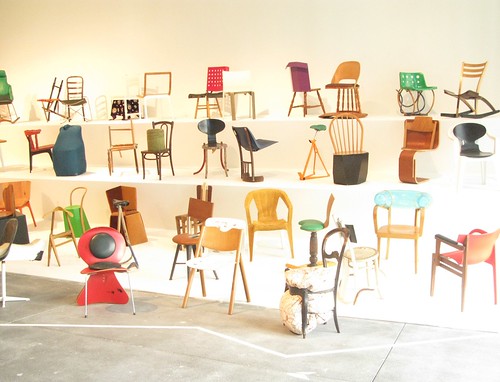Note: The five posts entitled “Groundwork” were originally written in 2009. See here.
. #
Be a platform. Join a network. For newspapers, that may mean soliciting the public’s assistance in finishing stories. It may mean recruiting and mobilizing the public to report. It may mean setting them up in business.
Jeff Jarvis
What Would Google Do? p. 126 #
Recapitulation
#
|
|
|
|
|
|
|
- Location of media makers:
|
|
|
- Characteristics of supports:
|
- limited space (print)
- limited time (electronic)
|
- unlimited space
- unlimited time
|
|
|
- sending products out to the users
|
|
- Distance between media – users:
|
|
|
- Contact between media – users:
|
- where the reader is, far from the origin of media (has no control).
|
- inside our website: proximity (has control)
|
|
|
- selling space (ads) = selling the users’ attention while keeping it.
- selling space to users
- subscriptions, copy sales
|
- selling clickable ads = selling the users’ attention (click) and losing it.
- selling space to users
- subscriptions, micropayments
|
- Distance between advertisers – users:
|
|
|
|
|
|
|
|
|
|
|
#
What We Gain, What We Lose
#
| What we lose on the Web |
What we gain on the Web |
| Distance #
- Sending content to people far away
- Marketing through space and time
|
Proximity #
- Proximity between media – user
- Proximity between users – advertisers
- Proximity between users
|
Pulpit
#
- One way communication (us to them)
- Synchrony
- Isolation (tranquility?): no users on our turf
- Readership as target
|
Origin #
- Conversation with people one by one
- Asynchrony
- Receiving real people in our salon
- Welcoming mindset and infrastructure
|
| Mass Media #
- Specialization by medium (print, radio, TV, poster, etc.)
- One to many
- Sole responsibility for producing content
|
Media Equality #
- One medium with identical properties for all media and users: text, images, audio, video
- One to one; many to many
- Collaboration, participation, shared responsibility
|
| Mass Media #
- Packaged product, limited space and time
- Discrete packages
- Statistical knowledge only of contact between media and users’ attention
- Statistics
- Limited memory for our content
|
Memory #
- Place, unlimited space and time
- Flow
- Control of environment where contact between media and users’ attention occurs
- Real numbers of all views, all exchanges, all clicks
- Unlimited memory for our content
- Unlimited memory for users’ content
- Unlimited memory for all interactions
|
What Did We Just Read?
- That we are in a place that we can expand at will.
- That we have a level playing field to compete with all other media.
- That we have unlimited memory for:
- Our content
- Our users’ content
- Our advertisers’ content
- Our merchants’ content
- That we have unlimited memory to record exchanges between:
- Users and our content
- Users and media makers
- Users and advertisers
- Users and merchants
- Users between themselves
- That we can give as much – or as little – space as we want to any and all of these exchanges.
- That we have total control over the environment where all these contacts, exchanges, and relationships take place.
- That we have total control over the context, the nature, and the content of these exchanges.
Is it possible
that we can’t find a way to make money with this? #
No.
Way. #
We have to use the system structured by the Four Observations. #
 #
#
#
This entry was posted
on Saturday, December 31st, 2011 at 8:55 am and is filed under Observations.
You can follow any responses to this entry through the RSS 2.0 feed.
Both comments and pings are currently closed.



